Explore Murun-Kuren - Mongolia Travel, Asia
Nestled in the heart of Khuvsgul province, Murun is a charming gateway to some of Mongolia’s most breathtaking natural landscapes and rich cultural experiences. As the capital of Khuvsgul, Murun is more than just a stopover on the way to the famed Khuvsgul Lake. It’s a destination brimming with history, hospitality, and hidden gems waiting to be explored. Whether you’re a seasoned traveler or new to Mongolia, Murun offers a perfect blend of adventure and tradition. From its bustling markets to its tranquil monasteries, there’s something here for every type of traveler.
Population: Approximately 40,000 in 2017.
Economy: Murun’s economy primarily relies on agriculture, livestock, and tourism. The town’s growth is supported by its natural resources and increasing interest in its scenic landscapes and cultural heritage.
Landmarks: Famous for the Khuvsgul Lake, Danzandarjaa Monastery, and Khövsgöl Province Museum.
Mongolia
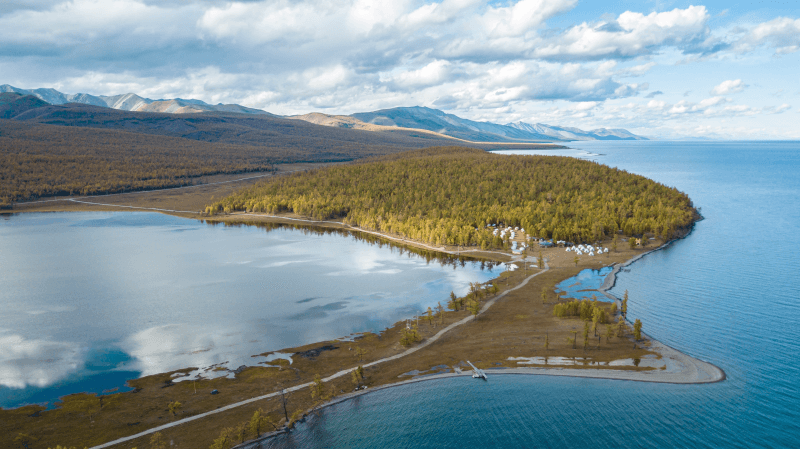
Overview of Murun-Kuren
History & Cultural Influence
Murun's story is deeply intertwined with Mongolia’s vast and varied history. Founded relatively recently in the early 19th century, the town was initially a military post. Over time, it evolved into a vibrant cultural and administrative hub of Khuvsgul province. The influence of Mongolian Buddhism is evident in the town’s architecture and daily life, with the Danzadarjaa Monastery serving as a poignant reminder of the region’s spiritual heritage. Throughout its history, Murun has been a meeting point for different ethnic groups, including the Khalkha Mongols and the indigenous Darkhad people. This cultural melting pot is reflected in the town’s festivals, crafts, and everyday life, offering visitors a glimpse into Mongolia’s rich and diverse cultural tapestry.
Interaction with The Locals
Murun, the capital of Khuvsgul province, is home to around 40,000 residents. The town's population is a blend of various ethnic groups, primarily Khalkha Mongols, with a significant presence of the Darkhad and other indigenous communities. The citizens of Murun are known for their warm hospitality and deep connection to Mongolian traditions, offering visitors an authentic glimpse into the region’s cultural heritage.
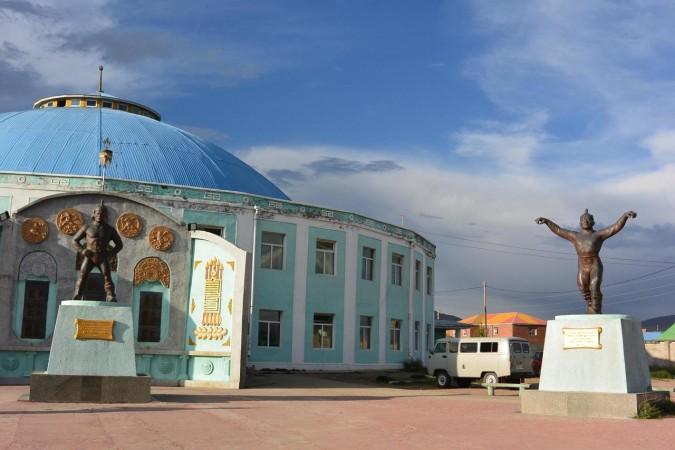
Murun-Kuren, Khuvsgul province - © Mongolia Tourism
Top Attractions in Murun
Khuvsgul Lake
No visit to Murun is complete without experiencing the majesty of Khuvsgul Lake. Known as the “Blue Pearl of Mongolia,” this vast freshwater lake is a haven for nature lovers. The crystal-clear waters, surrounded by dense forests and rugged mountains, offer a serene escape from the hustle and bustle of everyday life. Whether you’re interested in boating, fishing, or simply soaking in the natural beauty, Khuvsgul Lake is a must-see site in Mongolia.
Danzandarjaa Monastery
For a touch of spirituality and history, the Danzadarjaa Monastery stands as a testament to Mongolia’s enduring Buddhist traditions. Established in the 19th century, this monastery is not only a place of worship but also a cultural center where you can learn about Mongolian Buddhism and its role in local life. The peaceful atmosphere and stunning architecture make it a worthwhile visit for those seeking a deeper connection to the region’s heritage.
Khövsgöl Province Museum
Visit the Khövsgöl Province Museum to learn more about the history and culture of the area. Here, you’ll find a well-curated collection of artifacts that tell the story of Murun and its surrounding areas. From traditional clothing and tools to exhibits on the local wildlife, the museum offers a comprehensive overview of the region’s natural and cultural history.
Hidden Gems of Murun
While Murun’s major attractions draw many visitors, the town also harbors some lesser-known gems that are equally captivating.
- Erdenebulgan Hill: Located just outside the town, Erdenebulgan Hill offers panoramic views of Murun and the surrounding countryside. A short hike to the top rewards you with a breathtaking vista, especially during sunrise or sunset.
- Deer Stones: Hidden in the outskirts of Murun, the Deer Stones are ancient, mysterious monuments that date back to the Bronze Age. These standing stones are carved with intricate images of deer and other symbols, believed to have been created as memorials or religious totems. The site is quiet and often overlooked by tourists, making it a peaceful place to explore the country’s rich archaeological heritage.
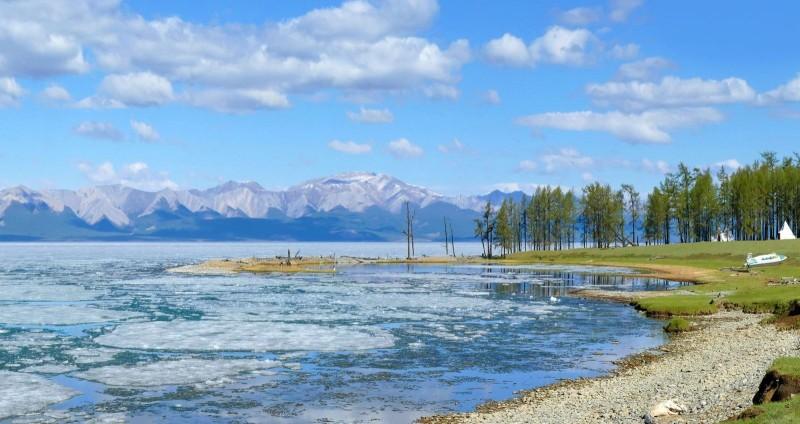
Khuvsgul Lake in Spring - © Britannica
Must-Try Dishes in Murun
Murun offers a culinary experience that reflects the heart of Mongolian cuisine. Whether you're a food enthusiast or simply curious about local flavors, these must-try local dishes will give you a true taste of the region.
- Buuz (Mongolian Steamed Dumplings): Steamed dumplings stuffed with spiced beef or goat are called buuz. These savory bites are a staple in Mongolian households and are especially popular during the Naadam Festival.
- Khuushuur (Mongolian Fried Dumplings): Similar to Buuz but fried, Khuushuur is a crispy meat pastry that’s a favorite street food. Its rich, flavorful filling and crunchy exterior make it a must-try.
- Tsuivan (Mongolian Stir-fried Noodles): Tsuivan is a filling noodle meal that is stir-fried with veggies and pieces of pork. It's comfort food at its best, offering a filling and delicious meal for any time of day.
- Boortsog: Boortsog are a kind of sweet, deep-fried dough nibbles that are typically consumed with tea. They’re a popular treat and a great example of Mongolian comfort food.
- Airag (Fermented Mare's Milk): For a truly local experience, try Airag, a traditional drink made from fermented mare’s milk. It’s slightly sour and fizzy, offering a unique taste of Mongolian culture.

Boortsog - © Always Yummy
Festivals & Local Celebrations
Murun is a town rich in tradition, and its festivals offer a vibrant glimpse into Mongolian culture. Participating in these celebrations is a great way to immerse yourself in the local way of life.
Naadam Festival
The Naadam Festival is Mongolia’s most famous celebration, and Murun hosts its own version every July. The "Three Manly Games" of archery, horse racing, and wrestling are on display at this event, which honors the spirit of the Mongolian people who are nomad warriors. Attending the Naadam in Murun gives you a more intimate experience compared to the larger events in Ulaanbaatar, allowing you to get closer to the action and the locals.
Ice Festival
Held on the frozen surface of Khuvsgul Lake, the Ice Festival is a unique winter event that takes place in early March. This festival features ice sculpting, traditional games, horse sled races, and cultural performances. It’s a celebration of the harsh yet beautiful Mongolian winter and offers a rare opportunity to see Murun’s community come together in one of the most spectacular settings imaginable.
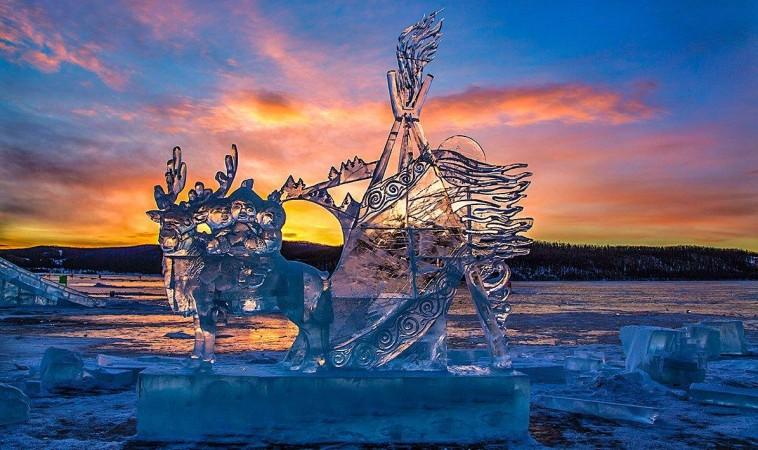
Ice sculpture at Ice Festival - © Mongolia Tourism
What to Do in Murun
Murun offers a variety of activities for every type of traveler. Here’s what you can do while visiting this charming town:
- Explore Khuvsgul Lake: Enjoy boating, fishing, or kayaking on Mongolia's stunning "Blue Pearl," surrounded by breathtaking landscapes.
- Horseback Riding: Experience the vast Mongolian steppes on horseback, a quintessential way to explore the countryside around Murun.
- Hike the Surrounding Hills: Take in panoramic views and immerse yourself in nature with hikes around Erdenebulgan Hill and other scenic spots.
- Visit Danzadarjaa Monastery: Learn about Mongolian Buddhism and explore the serene surroundings of this historic monastery.
- Visit Khövsgöl Province Museum: Dive into the local history and culture with a visit to this museum, which houses fascinating exhibits on the region’s heritage.
- Camp Under the Stars: Set up camp in the peaceful Mongolian wilderness and enjoy a night under the stars, far from the hustle and bustle of modern life.
Shopping in Murun
Shopping in Murun is a delightful blend of traditional Mongolian craftsmanship and everyday essentials, providing travelers with a chance to take home a piece of local culture.
- Local Markets: Murun’s local markets are bustling with activity and offer a wide array of products, from fresh produce to handmade crafts. One of the highlights is the Murun Market, where you can find traditional Mongolian clothing, textiles, and souvenirs like felt products and carved wooden items. These markets provide a unique shopping experience where you can directly interact with local artisans and vendors.
- Specialty Shops: For those looking for specific items, Murun has several specialty shops that cater to different needs. Artisanal stores in town sell beautifully crafted Thangka paintings, jewelry, and leather goods, each piece telling a story of Mongolian heritage. These shops are perfect for finding unique gifts or keepsakes that capture the essence of your visit to Murun.
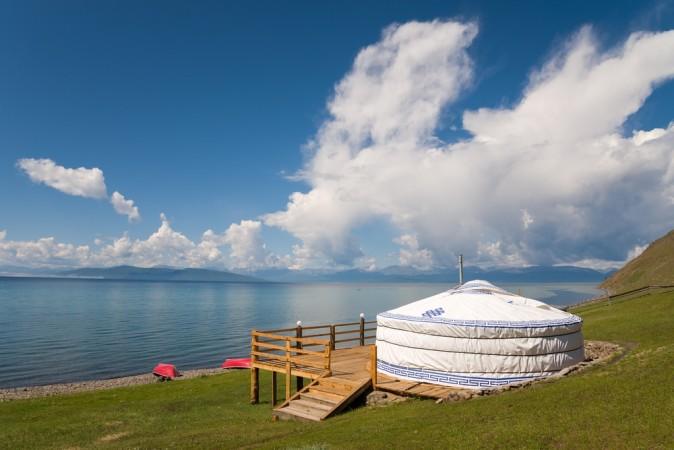
Camping at Khuvsgul Lake - © Adobe
Weather in Murun: Best Time to Visit
Murun experiences a distinct climate throughout the year, influencing seasonal tourism trends. Here’s what to expect during each season:
- Spring in Murun: Spring temperatures range from -5°C to 10°C (23°F to 50°F). As the snow melts, it’s a great time for early hiking and seeing the first blooms of the season. Spring is also a quieter period before the summer rush, offering a peaceful experience as the landscape awakens from winter.
- Summer in Murun: With temperatures ranging from 15°C to 25°C (59°F to 77°F), summer is the peak tourist season. Visitors flock to Khuvsgul Lake for boating and fishing, and the pleasant weather makes it ideal for outdoor activities and festivals like the Naadam Festival. This is the best time for exploring Murun’s natural beauty and participating in local events.
- Autumn in Murun: Autumn temperatures range from 0°C to 15°C (32°F to 59°F). This season is perfect for those who enjoy fewer crowds and the stunning fall foliage. Hiking becomes popular as the landscape transforms into vibrant hues of red and gold, and it’s a great time for photographers and nature lovers.
- Winter in Murun: With temperatures often falling below -20°C (-4°F), winter attracts tourists interested in the Ice Festival and winter sports. Snow-covered landscapes and frozen lakes provide opportunities for unique activities like ice sculpting and sledding. Be prepared for cold temperatures and plan for indoor activities as well.
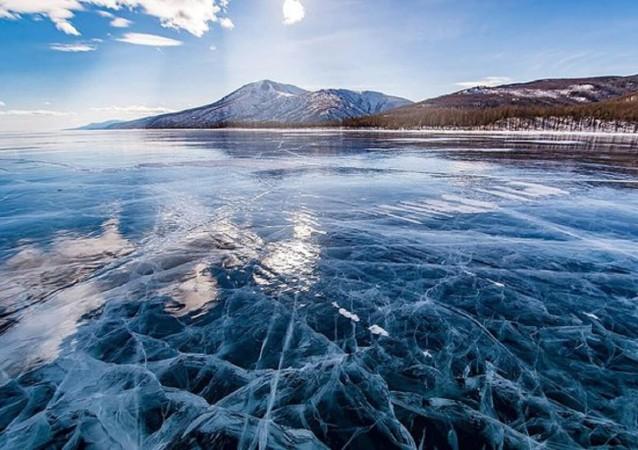
Winter in Murun - © Mongolia Tourism
Culture Etiquette in Murun
When visiting Murun, respecting local customs will enhance your experience and show appreciation for Mongolian culture. Here are some unique local customs to keep in mind:
- Traditional Greetings: In Murun, traditional Mongolian greetings involve placing your hands together and offering a slight bow. It’s also common to greet with a handshake, but always extend your hand to elders first. Showing respect in greetings sets a positive tone.
- Respect for Elders: Elders are highly respected in Mongolian culture. When meeting older individuals, stand when they enter the room and offer your seat if needed. It's an indication of respectful behavior and politeness.
- Visiting Mongolian Yurts: When entering a traditional Mongolian yurt (ger), always step in with your right foot first. It is customary for others to take off their shoes before going inside a Mongolian ger. Be mindful of the space and avoid touching personal items without permission.
- Offering and Receiving: When offering something to someone, use both hands. Similarly, accept gifts or food with both hands as a gesture of respect. This practice reflects your appreciation and understanding of local manners.
- Photographing Locals: Always ask for permission before taking photos of people, especially in rural areas. Many locals view photography as intrusive, so respecting their wishes is important for maintaining good relations.
- Eating Etiquette: During meals, it’s polite to wait for the host to start eating before you begin. If you’re offered food or drink, accept it graciously, even if you do not intend to consume it. It’s a sign of respect towards your host.
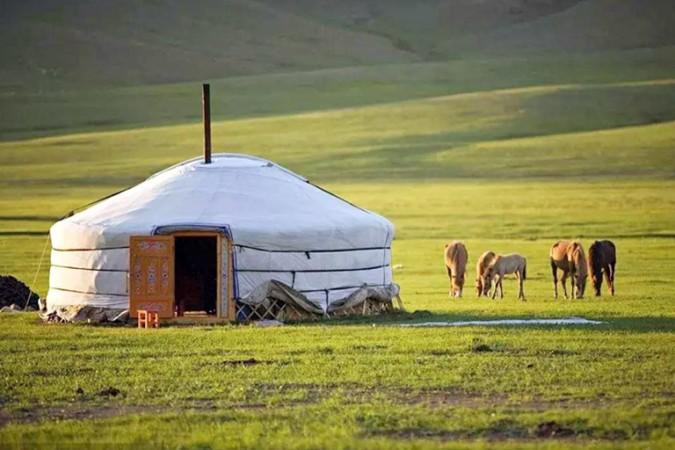
Traditional Mongolian Yurt - © China Discovery
Essential Travel Information
Getting Around Murun
- Local Taxis: Taxis are readily available in Murun and are a practical way to navigate the town. Make sure to agree on a fare before starting your journey.
- Buses: Regular bus services connect Murun with other towns and cities in Khuvsgul province, making it easy to travel further afield.
- Car Rentals: For more flexibility, renting a car is the optimal option when it's coming to Murun's vast landscape. This allows you to explore the beautiful countryside and nearby attractions at your own pace.
- Bicycle Rentals: For a more eco-friendly option, you can rent bicycles to explore Murun and its surroundings.
ATM & Banking Services
Access to financial services in Murun is straightforward, with numerous ATMs and banking options available. ATMs are conveniently located throughout the town, including at major banks and convenience stores, and accept international cards for easy cash withdrawals. Local banks provide various services, including currency exchange and account management. It’s a good idea to exchange some money before heading to more remote areas, as banks and designated exchange offices in town can assist with currency needs.
Where to Stay in Murun
- Hotels: Several hotels in Murun provide comfortable stays with amenities such as Wi-Fi, dining options, and tour services. Popular choices include Hotel Murun and Khuvsgul Hotel.
- Camping: If you’re adventurous, camping near Khuvsgul Lake or in the surrounding wilderness offers a unique way to experience the natural beauty of the area.
- Lodges and Ger camp: Eco-lodges and traditional Mongolian gers (yurts) are available for those seeking a more immersive experience in the Mongolian countryside.
Des articles pour vous

Voyage à Kampong Cham - Cambodge, Asie
Kampong Cham est une charmante ville riveraine située le long du fleuve Mékong. Connue pour son importance historique et ses attractions culturelles, Kampong Cham offre un mélange d'architecture coloniale, de temples anciens et de paysages pittoresques. Kampong Cham est reliée au district voisin de Tbong Khmum par le pont Kizuna, le premier pont au Cambodge à traverser le fleuve Mékong, en faisant un carrefour de transport crucial pour la région.
Population : Estimation de 80 000 habitants (en 2024)
Économie : Bien que n'étant pas encore une destination touristique majeure, Kampong Cham propose des sites culturels et historiques, tels que le temple Wat Nokor et le pont en bambou de Koh Pen, ainsi que des attractions naturelles comme des forêts et des chutes d'eau. Le gouvernement se concentre sur le développement du tourisme pour améliorer l'économie locale.
Points d'intérêt : Wat Nokor Bachey, Phnom Han Chey, Phnom Pros et Phnom Srey, pont en bambou de Koh Pen, Wat Joy T'maw, Preah Theat Teuk Chha, piste d'atterrissage abandonnée de l'US.

Explorez Nha Trang - Voyage au centre du Vietnam, Asie
Nichée le long de la magnifique côte du Vietnam, Nha Trang se distingue comme une destination de premier choix pour les voyageurs. Cette ville côtière, réputée pour ses superbes plages et sa vie marine foisonnante, s'adresse à tous. Nha Trang vous accueille à bras ouverts, que vous recherchiez des aventures, de la culture ou de la détente au bord de la mer. Ce guide vous fera découvrir les points forts de cet endroit magnifique, facilitant ainsi la planification de votre voyage de manière fluide et excitante.
Population : Environ 423 000 habitants en 2019.
Économie : L'un des principaux centres touristiques du Vietnam et la plus grande économie de la province de Khanh Hoa.
Sites emblématiques : Célèbre pour les tours Cham de Po Nagar, la cathédrale de Nha Trang et l'île Hon Mun.

Voyage à Sihanoukville - Cambodge, Asie
Sihanoukville, une ville côtière du sud-ouest du Cambodge, est la capitale de la province de Preah Sihanouk. Située sur une péninsule le long du golfe de Thaïlande, la ville est bien reliée à Phnom Penh par des autoroutes principales et dispose d'un aéroport international.
La ville abrite le seul port en eau profonde du Cambodge, jouant un rôle crucial dans la logistique et le commerce du pays. Les plages magnifiques de Sihanoukville, telles qu'Ochheuteal et Serendipity, attirent aussi bien les touristes nationaux qu'internationaux. Le développement économique a prospéré ces dernières années, en particulier grâce à la création de la Zone économique spéciale de Sihanoukville (SSEZ) et aux investissements chinois dans les casinos, l'immobilier et les stations balnéaires. La ville offre également des attractions naturelles telles que le parc national de Ream et plusieurs îles voisines, en faisant une destination variée pour les voyageurs d'affaires et de loisirs.
Population : La population de Sihanoukville était d'environ 160 000 habitants en 2024.
Économie : Sihanoukville, une ville côtière en pleine croissance au Cambodge, se distingue par son mélange dynamique de développement économique et de tourisme. La Zone économique spéciale de Sihanoukville (SSEZ) est devenue un pôle industriel majeur, abritant plus de 180 entreprises et créant des milliers d'emplois. Avec le seul port en eau profonde du Cambodge, la ville joue un rôle clé dans le commerce et la logistique du pays. Bien qu'elle se soit transformée d'une petite ville balnéaire tranquille en un centre urbain animé, Sihanoukville reste célèbre pour ses plages immaculées, attirant des touristes tout au long de l'année. Les investissements chinois importants ont alimenté la croissance des hôtels, des casinos et de l'immobilier, faisant de la ville un centre d'opportunités économiques et d'hospitalité.
Monuments : Plage d'Otres, Plage d'Ochheuteal, Plage de l'Indépendance, Parc national de Ream, Chute d'eau de Kbal Chhay, Monument des Lions d'Or, Wat Leu.

Explorez Kharkhorin - Voyage en Mongolie, Asie
Bienvenue à Kharkhorin, un trésor historique niché au cœur de la Mongolie. Ancienne capitale vibrante de l'Empire Mongol sous le légendaire Gengis Khan, Kharkhorin se dresse comme un témoignage de la riche culture et de l'histoire de la Mongolie. Cette ville antique possède une combinaison unique d'importance historique et de paysages époustouflants, en faisant une destination incontournable pour un voyage de rêve en Mongolie. En mettant le pied à Kharkhorin, vous ferez un saut dans le temps, à une époque de grands palais, de routes commerciales prospères et d'échanges culturels sans pareils. Que vous soyez intrigué par les ruines anciennes, désireux d'explorer les traditions locales ou simplement en quête d'une immersion dans la beauté naturelle de la Mongolie, Kharkhorin a quelque chose à offrir à chacun.
Population : Environ 1 000 habitants en 2020.
Économie : L'une des attractions touristiques les plus importantes de la Mongolie et l'ancienne capitale de l'Empire Mongol.
Monuments : Célèbre pour les Ruines de Kharkhorin, le Monastère d'Erdene Zuu, et la Vallée d'Orkhon, un site du patrimoine mondial de l'UNESCO.

Explore Luang Prabang - Laos Travel, Asia
Luang Prabang, nestled in northern Laos at the meeting point of the Mekong river and Nam Khan river, is a city celebrated for its rich cultural heritage and stunning natural beauty. Recognized as a UNESCO World Heritage Site in 1995, it boasts a unique blend of traditional Lao and French architecture that has been carefully preserved. Whether you're wandering through its ancient temples, admiring the local architecture, or soaking in the natural beauty of waterfalls and rivers, Luang Prabang offers something for everyone.
Population: Approximately 470,000 in 2020.
Economy: Luang Prabang's economy thrives on tourism, with its UNESCO status drawing visitors to its temples, natural wonders, and cultural experiences. Local crafts, hospitality, and small businesses also play vital roles, supporting the town's sustainable growth. Local crafts, hospitality, and small businesses also play vital roles, supporting the town's sustainable growth.
Landmarks: Famous for the Wat Xieng Thong, Royal Palace Museum (also known as Haw Kham), and Mount Phousi (Phou Si Hill).Luang Prabang, nestled in northern Laos at the meeting point of the Mekong river and Nam Khan river, is a city celebrated for its rich cultural heritage and stunning natural beauty. Recognized as a UNESCO World Heritage Site in 1995, it boasts a unique blend of traditional Lao and French architecture that has been carefully preserved. Whether you're wandering through its ancient temples, admiring the local architecture, or soaking in the natural beauty of waterfalls and rivers, Luang Prabang offers something for everyone.
Population: Approximately 470,000 in 2020.
Economy: Luang Prabang's economy thrives on tourism, with its UNESCO status drawing visitors to its temples, natural wonders, and cultural experiences. Local crafts, hospitality, and small businesses also play vital roles, supporting the town's sustainable growth. Local crafts, hospitality, and small businesses also play vital roles, supporting the town's sustainable growth.
Landmarks: Famous for the Wat Xieng Thong, Royal Palace Museum (also known as Haw Kham), and Mount Phousi (Phou Si Hill).

Explore Vientiane - Laos Travel, Asia
Vientiane, the capital of Laos, offers a unique travel experience for those looking to explore a peaceful Southeast Asian city with a deep connection to its cultural roots. Unlike other bustling capitals, Vientiane boasts a serene and laid-back atmosphere, making it a perfect destination for travelers wanting to escape the chaos of more crowded cities. This charming city sits along the Mekong River, offering scenic views, rich history, and a vibrant yet tranquil way of life. As a gateway to exploring Laos, this capital invites you to slow down, immerse in its heritage, and enjoy the local flavors.
Population: Approximately 840,000 in 2023.
Economy: Vientiane's economy is growing steadily, driven by government services, trade, and tourism. Key sectors include agriculture, manufacturing, and construction. The city's strategic location along the Mekong River supports trade with neighboring Thailand and Vietnam.
Landmarks: Famous for the Pha That Luang, Patuxai, and the Buddha Park (or Wat Xieng Khuan).
